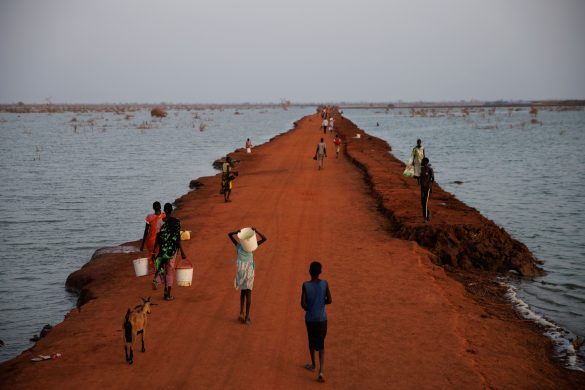Som om hensynet til talibanerne, regeringshæren og politiet ikke var nok, spiller en myriade af lokale og uberegnelige militser en stadig stigende rolle for hjælpens effektivitet – og bistandsfolkenes sikkerhed – i nationen, som nu skal være Danmarks største partner i udviklingssamarbejdet.
KUNDUZ, 5 April 2013 (IRIN): Hamidullah, the headmaster (rektor) of Haji Mir Alam girls’ school in Afghanistan’s northern Kunduz Province, was sitting at his desk in the summer of 2011 when members of a local militia entered the school.
“I said to myself, ‘You are a teacher; what will they do?’” he told IRIN.
The armed men escorted Hamidullah outside the school gate where their commander, Qadirak, was waiting. Then they beat him unconscious (slog ham bevidstløs) with their rifles.
“I still do not know the reason they beat me. If people beat me, it is like beating all the villagers. To show their power, they beat the father of education.”
Such abuses (overgreb) are a regular part of life, especially in the north and northeast, particularly in the provinces of Kunduz, Baghlan, Faryab and Balkh, where militias are commonplace.
These groups complicate the delivery of aid and create insecurity for ordinary people, who are frequently confused by the assortment (myriaden) of armed ethnic gangs, village protection forces and semi-official militia, according to half a dozen aid organizations in Kunduz interviewed by IRIN.
“There are irresponsible groups in the area. When they come to an area, they cause problems and hinder some work,” said Hayatullah Amiri, director of the Human Rights Commission, which works in Kunduz.
Militia power
These groups include village militias known as ‘arbaki’, which typically lack uniforms and training, and the Afghan Local Police (ALP), locally based militia groups that have received some training from US Special Forces and which are officially under the control of the Ministry of Interior.
The war in Afghanistan is often seen as a fight between Taliban insurgent groups and government and international forces, but in reality, local armed groups frequently operate between and among these sides in a kind of grey area.
Militias, often tied to local strongmen, provide security against Taliban insurgents in areas without a government presence, and many have, at different times, been in partnership with government and international forces.
Individual members have often switched sides and allegiance (tilknytning) between the different groups involved in the conflict.
After the fall of the Taliban in 2001, international troops began hiring some of the militias – which had helped drive out the Taliban – as temporary security forces.
The government initiated a disarmament, demobilization and rehabilitation (DDR) programme in early 2003, to disband (opløse) militia groups and help members reintegrate into society, but progress was slow, according to the International Crisis Group (ICG).
As the security situation deteriorated, the international forces began to sponsor many of these militias to extend their reach. Such semi-unofficial forces played an important role in providing security for the 2009 elections.
Things took a more formal turn in 2010 when the Afghan Local Police (ALP) was officially recognized as the primary local defence force to help keep remote communities free from Taliban insurgents.
Abuses (overgreb)
Læs videre på
http://www.irinnews.org/Report/97788/Security-and-aid-work-in-militia-controlled-Afghanistan














